What is Customer Analytics and How it Works for Growth
What is Customer Analytics and How it Works for Growth
What is Customer Analytics and How it Works for Growth
Learn how customer data analysis unlocks growth by understanding your audience, personalizing experiences, and making data-driven decisions.
Learn how customer data analysis unlocks growth by understanding your audience, personalizing experiences, and making data-driven decisions.
Learn how customer data analysis unlocks growth by understanding your audience, personalizing experiences, and making data-driven decisions.
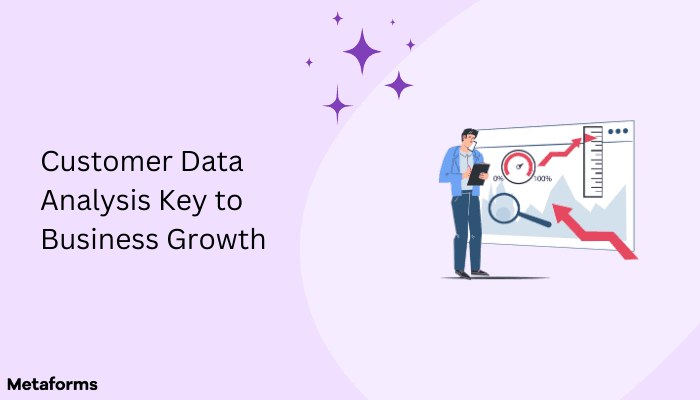


"In God we trust. All others must bring data." - W. Edwards Deming
This insightful quote from quality management pioneer W. Edwards Deming perfectly captures the importance of data in today's business world. Especially when it comes to understanding your customers!
Customer data analysis is like having a roadmap to see into your customers' minds. You can tailor experiences, personalize marketing, and achieve explosive growth by analysing their behaviour, preferences, and feedback.
What is customer data analysis?
It is the cornerstone of building a successful customer-centric business. Imagine seeing the world through your customer’s eyes, understanding their needs, wants, and pain points.
Why do you think it's important? It empowers you to:
1. Identify, attract, and retain profitable customers:
By pinpointing the characteristics and behaviours of your ideal customer, you can craft targeted marketing campaigns that resonate on a deeper level. As marketing guru Philip Kotler once said, "Marketing is no longer about the stuff that you make, but about the stories you tell."
Customer data analysis equips you with the insights to craft compelling stories that resonate with the right audience and turn them into loyal brand advocates.
2. Create a unified view of your customer base:
Gone are the days of operating in silos, with different departments holding fragmented pieces of customer data. Customer analytics paints a complete picture, allowing you to deliver a seamless and personalized experience across all touchpoints.
Think of it as conducting a symphony in which every interaction—from website browsing to email marketing—complements the others, creating a harmonious customer journey.
3. Unlock customer insights:
Customer data is a treasure trove of hidden gems waiting to be unearthed. You can glean valuable insights into customer behaviour, preferences, and feedback by leveraging customer analytics. You can forge stronger relationships and build lasting brand loyalty by truly understanding your customers.
Why does customer analytics matter?

The landscape of customer interaction has undergone a seismic shift. Empowered by the internet and mobile technology, customers now have unprecedented access to information. They can research products, compare prices, and read reviews – all at their fingertips.
This newfound knowledge has fundamentally changed their expectations. They demand personalized experiences, relevant communication, and seamless interactions across all touchpoints.
This power shift necessitates a data-driven approach. By leveraging customer analytics, businesses can better understand their target audience's research habits, preferred communication channels, and buying triggers. This knowledge equips them to tailor marketing strategies and craft compelling messages that resonate with today's informed customers.
Customer analytics isn't just about understanding your customers—it's about using that knowledge to cultivate stronger relationships. By analyzing customer data, you can identify their pain points, preferences, and buying behaviour. This empowers you to create targeted campaigns and personalized experiences that foster deeper engagement. Then, you benefit from Improved Customer Engagement, Retention, and Informed Acquisition Strategies.
For instance, say you send birthday discounts to loyal customers or recommend products based on past purchases. These personalized touches go a long way in building trust and loyalty, keeping your customers returning for more. Furthermore, customer data analytics sheds light on the most effective channels for customer acquisition. By understanding where your ideal customers spend their time online and the messaging that resonates most deeply, you can optimize your marketing spend and attract high-value customers.
Strategic advantage customer analytics provides in competitive markets:
In today's fiercely competitive landscape, businesses that leverage customer data analytics gain a significant edge. By understanding their customers more deeply, these businesses can tailor offerings, personalize communication, and anticipate customer needs before they arise.
This proactive approach fosters brand loyalty and positions you as a trusted advisor, not just a product or service provider. Customer analytics empowers you to identify emerging trends and market shifts, allowing you to adapt your strategies and stay ahead of the competition.
What if you can predict customer needs and deliver solutions before your competitors can react? That's the power of customer analytics—a strategic advantage that sets your business apart in a crowded marketplace.
How customer analytics works:

So, you're convinced of the power of customer analytics, but how exactly does it work? It's like putting together a complex puzzle – each piece of data contributes to the bigger picture. Here's a breakdown of the key steps involved:
Customer data is like raw ore – valuable, but it needs refinement to unlock its true potential. The first step involves gathering data from various sources, such as website interactions, purchase history, email marketing campaigns, and social media engagement. Once collected, this data undergoes various processes, including mining, predictive modelling, and machine learning algorithms, to refine it for analysis.
Types of customer data:
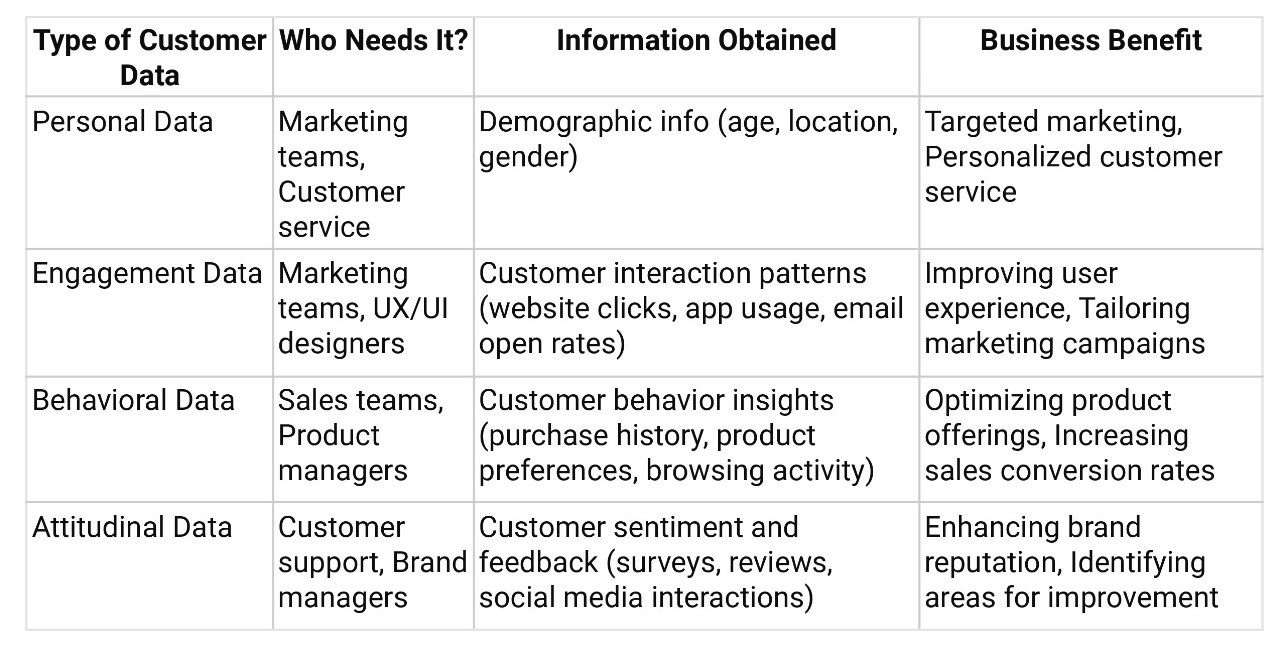
Not all data is created equal. Customer data can be broadly categorized into four main types:
Personal Data: This includes basic demographic information like age, location, and gender. While valuable, personal data should be collected and used responsibly, adhering to data privacy regulations.
Engagement Data: This data reveals how customers interact with your brand. Think of website clicks, app usage, email open rates, and time spent on specific pages. Engagement data provides insights into customer interests and preferences.
Behavioral Data: This dives deeper, revealing customer purchase history, product preferences, browsing activity, and abandoned cart details. Behavioural data paints a clear picture of customer buying habits and decision-making processes.
Attitudinal Data: This category encompasses customer sentiment and feedback. It can be gathered through surveys, reviews, social media analysis, and customer support interactions. Attitudinal data provides valuable insights into customer satisfaction, brand perception, and areas for improvement.
By collecting and analyzing all four types of data, you gain a holistic view of your customers, allowing you to make informed decisions for every aspect of your business. Metaforms offers numerous templates that you can try to get your customer’s data.
However, the road to customer analytics isn't always smooth sailing. Challenges can arise during the data aggregation stage, where information might be siloed across different departments or platforms.
Data validation ensures the accuracy of your information, while data cleaning involves removing inconsistencies and errors. This story's hero is a central customer database, serving as a unified repository for all your customer data.
This centralized system ensures that everyone in your organization works with the same clean and accurate information, facilitating efficient analysis and data-driven decision-making.
Customer analytics tools and technologies:
Customer analytics tools are like Swiss Army knives for the data-driven marketer. They offer a variety of functionalities designed to improve customer experience and personalize marketing efforts. Here are a few key functions:
Data collection and integration: These tools seamlessly collect customer data from various sources, eliminating the need for manual data entry and ensuring a holistic view of your customer base.
Data visualization and reporting: Gone are the days of poring over complex spreadsheets. Customer analytics tools translate data into visually compelling dashboards and reports, making it easy to identify trends and patterns.
Segmentation and targeting: These tools empower you to segment your customer base based on demographics, behaviour, and preferences. This allows you to craft targeted marketing campaigns that resonate with specific customer groups, maximizing the impact of your marketing spend.
Customer journey mapping: Visualize your customer's journey with your brand, from initial interaction to purchase and beyond. This valuable insight allows you to identify areas for improvement and ensure a seamless customer experience at every touchpoint.
By leveraging these functionalities, customer analytics tools empower you to personalize marketing campaigns, optimize website experiences, and build stronger customer relationships.
Examples of popular tools:
The world of customer analytics tools is vast and ever-evolving. Here's a glimpse at a few popular options, along with their unique strengths:
Adobe Analytics: A comprehensive platform offering robust data collection, analysis, and reporting capabilities. Ideal for large enterprises with complex marketing needs.
Google Analytics 360: This powerful Google solution offers advanced segmentation, attribution modelling, and custom reporting features. It is well-suited for businesses with a strong digital presence.
Amplitude is a user behaviour analytics tool that tracks user interactions within mobile apps and websites. It is ideal for businesses focused on optimizing product adoption and user engagement.
It's important to note that there's no one-size-fits-all solution. Selecting the right customer analytics tool requires careful consideration. Here are some key factors to keep in mind:
Organization Size and Needs: Large enterprises with complex data requirements might opt for a comprehensive platform like Adobe Analytics. Smaller businesses might find a user-friendly option like Google Analytics more suitable.
Data Expertise: Consider your team's comfort level with data analysis. Some tools offer intuitive interfaces and pre-built reports, while others require more technical know-how.
Budget: Customer analytics tools range in price from free to enterprise-level subscriptions. Determine your budget and identify features that provide the most value for your investment.
In selecting customer analytics tools, also consider regulatory compliance needs and compatibility with your existing technical stack.
Applications and benefits of customer analytics:
Customer analytics isn't just about collecting data – it's about transforming that data into actionable insights that fuel business growth. Here's a look at how customer analytics empowers you to achieve key objectives:
Enhancing marketing strategies:
Imagine crafting marketing campaigns that resonate on a personal level. Customer analytics allows you to understand your audience's online behavior - the websites they visit, the content they engage with, and the products they browse.
With this knowledge, you can create targeted campaigns that speak directly to their needs and interests. Think personalized email offers, retargeting ads based on browsing history, and social media content tailored to specific customer segments.
Predicting churn and optimizing customer lifetime value:
Customer churn – the rate customers stop doing business with you – is a major concern. Customer analytics helps you identify customers at risk of churning by analyzing their behaviour and purchase history.
You can proactively address their needs and concerns to prevent churn and retain valuable customers. Furthermore, customer analytics allows you to segment your customer base based on value.
This empowers you to personalize experiences for high-value customers, maximizing their lifetime value to your business.
Informing product development and customer service:
Customer feedback is a goldmine of insights, but it can be scattered across various channels. Customer analytics helps you gather and analyze feedback from surveys, reviews, social media interactions, and customer support conversations.
By identifying recurring themes and pain points, you can inform product development and ensure your offerings cater to actual customer needs. Additionally, customer analytics empowers you to identify areas for improvement in your customer service strategy.
By analyzing customer support interactions, you can streamline processes, address common concerns, and ultimately deliver exceptional service that fosters customer loyalty.
Looking for a quick answer? Then The following information is just for you!
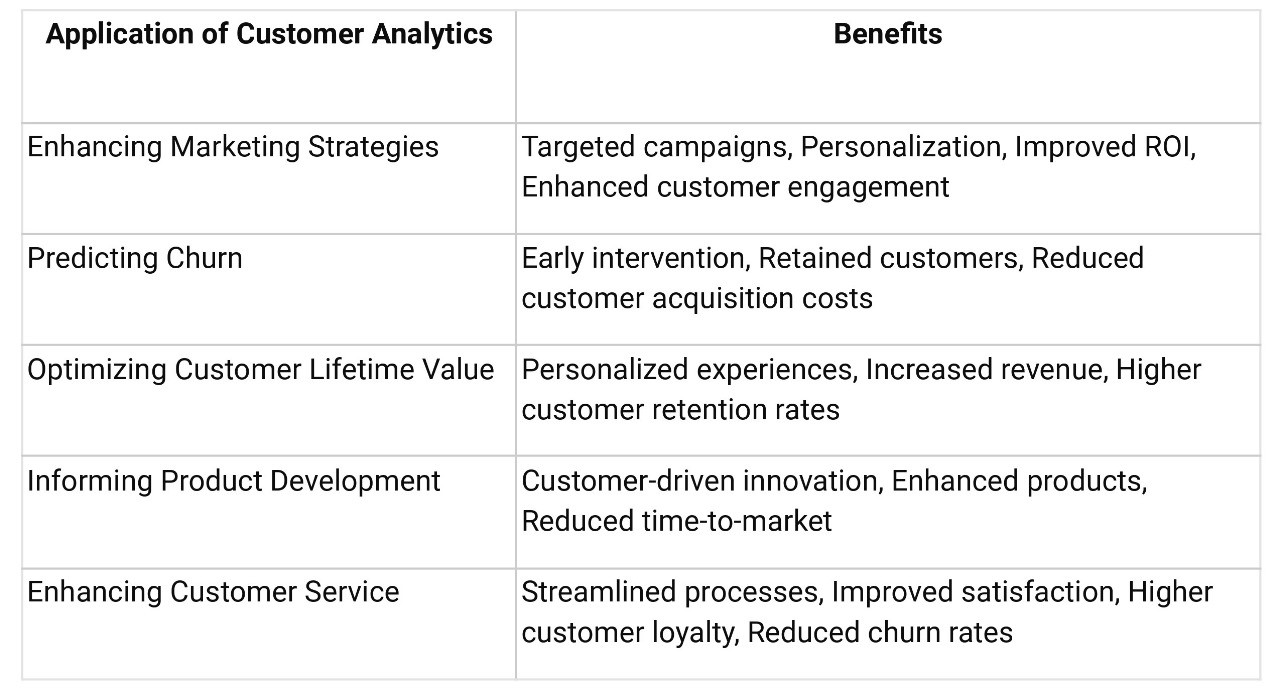
Overcoming challenges in customer analytics
Customer analytics offers many benefits, but navigating data privacy regulations is crucial. Prioritize ethical data collection and responsible usage to ensure compliance with GDPR and similar laws. The recent decline of third-party cookies also necessitates adaptation.
Focus on building a strong foundation of first-party data collected through surveys, website behaviour tracking, and loyalty programs. Exploring alternative tracking methods will future-proof your customer analytics strategy.
Implement robust data protection measures to safeguard customer information and build trust with your audience. By prioritizing both ethical data practices and robust security, you can reap the rewards of customer analytics while navigating the evolving regulatory landscape.
Future of Customer Analytics
The future of customer analytics is as bright as the data it analyzes! While navigating a dynamic landscape with evolving privacy regulations and analysis tools, businesses can unlock even greater value:
Adapting to change: The data privacy landscape constantly shifts, and customer analytics tools continuously improve. The key to success lies in adaptability. Businesses that embrace these changes and invest in future-proof solutions will stay ahead of the curve.
Deeper customer insights: The future belongs to those who deeply understand their customers. Expect an even greater emphasis on analyzing behavioural data, demographics, and attitudinal insights. This holistic view will empower businesses to anticipate customer needs and deliver hyper-personalized experiences.
Innovation beyond cookies: The demise of the third-party cookie may seem like a setback, but it's actually an opportunity for innovation. Expect advancements in contextual targeting, first-party data collection methods, and even artificial intelligence-powered customer insights. The future of customer analytics is cookieless. The demise of the third-party cookie may seem like a setback, but it's actually an opportunity for innovation. Expect advancements in contextual targeting, first-party data collection methods, and even artificial intelligence-powered customer insights. The future of customer analytics is chaos but far from powerless.
Conclusion
In today's data-driven world, customer analytics is no longer a luxury – it's a necessity. By harnessing the power of customer data, you can understand your audience on a deeper level, personalize experiences, and make data-driven decisions that fuel growth. But navigating the complexities of data collection, analysis, and strategy can be daunting.
That's where Metaforms comes in. We're an AI-powered UX company with a mission to revolutionize the way businesses capture and utilize customer data. Our easy-to-use forms, powered by cutting-edge AI, minimize friction and gather the most relevant customer insights – all without the need for lengthy and frustrating form filling.
Don't let your competitors steal a march on you! Embrace customer analytics today and unlock the full potential of your business. Metaforms can help you get started with a free trial or grade your existing form and help you discover how AI-powered forms can revolutionize your customer data collection strategy!
The future of customer-centric success starts with a deeper understanding of your customers – and that journey begins with a conversation with Metaforms.
"In God we trust. All others must bring data." - W. Edwards Deming
This insightful quote from quality management pioneer W. Edwards Deming perfectly captures the importance of data in today's business world. Especially when it comes to understanding your customers!
Customer data analysis is like having a roadmap to see into your customers' minds. You can tailor experiences, personalize marketing, and achieve explosive growth by analysing their behaviour, preferences, and feedback.
What is customer data analysis?
It is the cornerstone of building a successful customer-centric business. Imagine seeing the world through your customer’s eyes, understanding their needs, wants, and pain points.
Why do you think it's important? It empowers you to:
1. Identify, attract, and retain profitable customers:
By pinpointing the characteristics and behaviours of your ideal customer, you can craft targeted marketing campaigns that resonate on a deeper level. As marketing guru Philip Kotler once said, "Marketing is no longer about the stuff that you make, but about the stories you tell."
Customer data analysis equips you with the insights to craft compelling stories that resonate with the right audience and turn them into loyal brand advocates.
2. Create a unified view of your customer base:
Gone are the days of operating in silos, with different departments holding fragmented pieces of customer data. Customer analytics paints a complete picture, allowing you to deliver a seamless and personalized experience across all touchpoints.
Think of it as conducting a symphony in which every interaction—from website browsing to email marketing—complements the others, creating a harmonious customer journey.
3. Unlock customer insights:
Customer data is a treasure trove of hidden gems waiting to be unearthed. You can glean valuable insights into customer behaviour, preferences, and feedback by leveraging customer analytics. You can forge stronger relationships and build lasting brand loyalty by truly understanding your customers.
Why does customer analytics matter?

The landscape of customer interaction has undergone a seismic shift. Empowered by the internet and mobile technology, customers now have unprecedented access to information. They can research products, compare prices, and read reviews – all at their fingertips.
This newfound knowledge has fundamentally changed their expectations. They demand personalized experiences, relevant communication, and seamless interactions across all touchpoints.
This power shift necessitates a data-driven approach. By leveraging customer analytics, businesses can better understand their target audience's research habits, preferred communication channels, and buying triggers. This knowledge equips them to tailor marketing strategies and craft compelling messages that resonate with today's informed customers.
Customer analytics isn't just about understanding your customers—it's about using that knowledge to cultivate stronger relationships. By analyzing customer data, you can identify their pain points, preferences, and buying behaviour. This empowers you to create targeted campaigns and personalized experiences that foster deeper engagement. Then, you benefit from Improved Customer Engagement, Retention, and Informed Acquisition Strategies.
For instance, say you send birthday discounts to loyal customers or recommend products based on past purchases. These personalized touches go a long way in building trust and loyalty, keeping your customers returning for more. Furthermore, customer data analytics sheds light on the most effective channels for customer acquisition. By understanding where your ideal customers spend their time online and the messaging that resonates most deeply, you can optimize your marketing spend and attract high-value customers.
Strategic advantage customer analytics provides in competitive markets:
In today's fiercely competitive landscape, businesses that leverage customer data analytics gain a significant edge. By understanding their customers more deeply, these businesses can tailor offerings, personalize communication, and anticipate customer needs before they arise.
This proactive approach fosters brand loyalty and positions you as a trusted advisor, not just a product or service provider. Customer analytics empowers you to identify emerging trends and market shifts, allowing you to adapt your strategies and stay ahead of the competition.
What if you can predict customer needs and deliver solutions before your competitors can react? That's the power of customer analytics—a strategic advantage that sets your business apart in a crowded marketplace.
How customer analytics works:

So, you're convinced of the power of customer analytics, but how exactly does it work? It's like putting together a complex puzzle – each piece of data contributes to the bigger picture. Here's a breakdown of the key steps involved:
Customer data is like raw ore – valuable, but it needs refinement to unlock its true potential. The first step involves gathering data from various sources, such as website interactions, purchase history, email marketing campaigns, and social media engagement. Once collected, this data undergoes various processes, including mining, predictive modelling, and machine learning algorithms, to refine it for analysis.
Types of customer data:

Not all data is created equal. Customer data can be broadly categorized into four main types:
Personal Data: This includes basic demographic information like age, location, and gender. While valuable, personal data should be collected and used responsibly, adhering to data privacy regulations.
Engagement Data: This data reveals how customers interact with your brand. Think of website clicks, app usage, email open rates, and time spent on specific pages. Engagement data provides insights into customer interests and preferences.
Behavioral Data: This dives deeper, revealing customer purchase history, product preferences, browsing activity, and abandoned cart details. Behavioural data paints a clear picture of customer buying habits and decision-making processes.
Attitudinal Data: This category encompasses customer sentiment and feedback. It can be gathered through surveys, reviews, social media analysis, and customer support interactions. Attitudinal data provides valuable insights into customer satisfaction, brand perception, and areas for improvement.
By collecting and analyzing all four types of data, you gain a holistic view of your customers, allowing you to make informed decisions for every aspect of your business. Metaforms offers numerous templates that you can try to get your customer’s data.
However, the road to customer analytics isn't always smooth sailing. Challenges can arise during the data aggregation stage, where information might be siloed across different departments or platforms.
Data validation ensures the accuracy of your information, while data cleaning involves removing inconsistencies and errors. This story's hero is a central customer database, serving as a unified repository for all your customer data.
This centralized system ensures that everyone in your organization works with the same clean and accurate information, facilitating efficient analysis and data-driven decision-making.
Customer analytics tools and technologies:
Customer analytics tools are like Swiss Army knives for the data-driven marketer. They offer a variety of functionalities designed to improve customer experience and personalize marketing efforts. Here are a few key functions:
Data collection and integration: These tools seamlessly collect customer data from various sources, eliminating the need for manual data entry and ensuring a holistic view of your customer base.
Data visualization and reporting: Gone are the days of poring over complex spreadsheets. Customer analytics tools translate data into visually compelling dashboards and reports, making it easy to identify trends and patterns.
Segmentation and targeting: These tools empower you to segment your customer base based on demographics, behaviour, and preferences. This allows you to craft targeted marketing campaigns that resonate with specific customer groups, maximizing the impact of your marketing spend.
Customer journey mapping: Visualize your customer's journey with your brand, from initial interaction to purchase and beyond. This valuable insight allows you to identify areas for improvement and ensure a seamless customer experience at every touchpoint.
By leveraging these functionalities, customer analytics tools empower you to personalize marketing campaigns, optimize website experiences, and build stronger customer relationships.
Examples of popular tools:
The world of customer analytics tools is vast and ever-evolving. Here's a glimpse at a few popular options, along with their unique strengths:
Adobe Analytics: A comprehensive platform offering robust data collection, analysis, and reporting capabilities. Ideal for large enterprises with complex marketing needs.
Google Analytics 360: This powerful Google solution offers advanced segmentation, attribution modelling, and custom reporting features. It is well-suited for businesses with a strong digital presence.
Amplitude is a user behaviour analytics tool that tracks user interactions within mobile apps and websites. It is ideal for businesses focused on optimizing product adoption and user engagement.
It's important to note that there's no one-size-fits-all solution. Selecting the right customer analytics tool requires careful consideration. Here are some key factors to keep in mind:
Organization Size and Needs: Large enterprises with complex data requirements might opt for a comprehensive platform like Adobe Analytics. Smaller businesses might find a user-friendly option like Google Analytics more suitable.
Data Expertise: Consider your team's comfort level with data analysis. Some tools offer intuitive interfaces and pre-built reports, while others require more technical know-how.
Budget: Customer analytics tools range in price from free to enterprise-level subscriptions. Determine your budget and identify features that provide the most value for your investment.
In selecting customer analytics tools, also consider regulatory compliance needs and compatibility with your existing technical stack.
Applications and benefits of customer analytics:
Customer analytics isn't just about collecting data – it's about transforming that data into actionable insights that fuel business growth. Here's a look at how customer analytics empowers you to achieve key objectives:
Enhancing marketing strategies:
Imagine crafting marketing campaigns that resonate on a personal level. Customer analytics allows you to understand your audience's online behavior - the websites they visit, the content they engage with, and the products they browse.
With this knowledge, you can create targeted campaigns that speak directly to their needs and interests. Think personalized email offers, retargeting ads based on browsing history, and social media content tailored to specific customer segments.
Predicting churn and optimizing customer lifetime value:
Customer churn – the rate customers stop doing business with you – is a major concern. Customer analytics helps you identify customers at risk of churning by analyzing their behaviour and purchase history.
You can proactively address their needs and concerns to prevent churn and retain valuable customers. Furthermore, customer analytics allows you to segment your customer base based on value.
This empowers you to personalize experiences for high-value customers, maximizing their lifetime value to your business.
Informing product development and customer service:
Customer feedback is a goldmine of insights, but it can be scattered across various channels. Customer analytics helps you gather and analyze feedback from surveys, reviews, social media interactions, and customer support conversations.
By identifying recurring themes and pain points, you can inform product development and ensure your offerings cater to actual customer needs. Additionally, customer analytics empowers you to identify areas for improvement in your customer service strategy.
By analyzing customer support interactions, you can streamline processes, address common concerns, and ultimately deliver exceptional service that fosters customer loyalty.
Looking for a quick answer? Then The following information is just for you!

Overcoming challenges in customer analytics
Customer analytics offers many benefits, but navigating data privacy regulations is crucial. Prioritize ethical data collection and responsible usage to ensure compliance with GDPR and similar laws. The recent decline of third-party cookies also necessitates adaptation.
Focus on building a strong foundation of first-party data collected through surveys, website behaviour tracking, and loyalty programs. Exploring alternative tracking methods will future-proof your customer analytics strategy.
Implement robust data protection measures to safeguard customer information and build trust with your audience. By prioritizing both ethical data practices and robust security, you can reap the rewards of customer analytics while navigating the evolving regulatory landscape.
Future of Customer Analytics
The future of customer analytics is as bright as the data it analyzes! While navigating a dynamic landscape with evolving privacy regulations and analysis tools, businesses can unlock even greater value:
Adapting to change: The data privacy landscape constantly shifts, and customer analytics tools continuously improve. The key to success lies in adaptability. Businesses that embrace these changes and invest in future-proof solutions will stay ahead of the curve.
Deeper customer insights: The future belongs to those who deeply understand their customers. Expect an even greater emphasis on analyzing behavioural data, demographics, and attitudinal insights. This holistic view will empower businesses to anticipate customer needs and deliver hyper-personalized experiences.
Innovation beyond cookies: The demise of the third-party cookie may seem like a setback, but it's actually an opportunity for innovation. Expect advancements in contextual targeting, first-party data collection methods, and even artificial intelligence-powered customer insights. The future of customer analytics is cookieless. The demise of the third-party cookie may seem like a setback, but it's actually an opportunity for innovation. Expect advancements in contextual targeting, first-party data collection methods, and even artificial intelligence-powered customer insights. The future of customer analytics is chaos but far from powerless.
Conclusion
In today's data-driven world, customer analytics is no longer a luxury – it's a necessity. By harnessing the power of customer data, you can understand your audience on a deeper level, personalize experiences, and make data-driven decisions that fuel growth. But navigating the complexities of data collection, analysis, and strategy can be daunting.
That's where Metaforms comes in. We're an AI-powered UX company with a mission to revolutionize the way businesses capture and utilize customer data. Our easy-to-use forms, powered by cutting-edge AI, minimize friction and gather the most relevant customer insights – all without the need for lengthy and frustrating form filling.
Don't let your competitors steal a march on you! Embrace customer analytics today and unlock the full potential of your business. Metaforms can help you get started with a free trial or grade your existing form and help you discover how AI-powered forms can revolutionize your customer data collection strategy!
The future of customer-centric success starts with a deeper understanding of your customers – and that journey begins with a conversation with Metaforms.
"In God we trust. All others must bring data." - W. Edwards Deming
This insightful quote from quality management pioneer W. Edwards Deming perfectly captures the importance of data in today's business world. Especially when it comes to understanding your customers!
Customer data analysis is like having a roadmap to see into your customers' minds. You can tailor experiences, personalize marketing, and achieve explosive growth by analysing their behaviour, preferences, and feedback.
What is customer data analysis?
It is the cornerstone of building a successful customer-centric business. Imagine seeing the world through your customer’s eyes, understanding their needs, wants, and pain points.
Why do you think it's important? It empowers you to:
1. Identify, attract, and retain profitable customers:
By pinpointing the characteristics and behaviours of your ideal customer, you can craft targeted marketing campaigns that resonate on a deeper level. As marketing guru Philip Kotler once said, "Marketing is no longer about the stuff that you make, but about the stories you tell."
Customer data analysis equips you with the insights to craft compelling stories that resonate with the right audience and turn them into loyal brand advocates.
2. Create a unified view of your customer base:
Gone are the days of operating in silos, with different departments holding fragmented pieces of customer data. Customer analytics paints a complete picture, allowing you to deliver a seamless and personalized experience across all touchpoints.
Think of it as conducting a symphony in which every interaction—from website browsing to email marketing—complements the others, creating a harmonious customer journey.
3. Unlock customer insights:
Customer data is a treasure trove of hidden gems waiting to be unearthed. You can glean valuable insights into customer behaviour, preferences, and feedback by leveraging customer analytics. You can forge stronger relationships and build lasting brand loyalty by truly understanding your customers.
Why does customer analytics matter?

The landscape of customer interaction has undergone a seismic shift. Empowered by the internet and mobile technology, customers now have unprecedented access to information. They can research products, compare prices, and read reviews – all at their fingertips.
This newfound knowledge has fundamentally changed their expectations. They demand personalized experiences, relevant communication, and seamless interactions across all touchpoints.
This power shift necessitates a data-driven approach. By leveraging customer analytics, businesses can better understand their target audience's research habits, preferred communication channels, and buying triggers. This knowledge equips them to tailor marketing strategies and craft compelling messages that resonate with today's informed customers.
Customer analytics isn't just about understanding your customers—it's about using that knowledge to cultivate stronger relationships. By analyzing customer data, you can identify their pain points, preferences, and buying behaviour. This empowers you to create targeted campaigns and personalized experiences that foster deeper engagement. Then, you benefit from Improved Customer Engagement, Retention, and Informed Acquisition Strategies.
For instance, say you send birthday discounts to loyal customers or recommend products based on past purchases. These personalized touches go a long way in building trust and loyalty, keeping your customers returning for more. Furthermore, customer data analytics sheds light on the most effective channels for customer acquisition. By understanding where your ideal customers spend their time online and the messaging that resonates most deeply, you can optimize your marketing spend and attract high-value customers.
Strategic advantage customer analytics provides in competitive markets:
In today's fiercely competitive landscape, businesses that leverage customer data analytics gain a significant edge. By understanding their customers more deeply, these businesses can tailor offerings, personalize communication, and anticipate customer needs before they arise.
This proactive approach fosters brand loyalty and positions you as a trusted advisor, not just a product or service provider. Customer analytics empowers you to identify emerging trends and market shifts, allowing you to adapt your strategies and stay ahead of the competition.
What if you can predict customer needs and deliver solutions before your competitors can react? That's the power of customer analytics—a strategic advantage that sets your business apart in a crowded marketplace.
How customer analytics works:

So, you're convinced of the power of customer analytics, but how exactly does it work? It's like putting together a complex puzzle – each piece of data contributes to the bigger picture. Here's a breakdown of the key steps involved:
Customer data is like raw ore – valuable, but it needs refinement to unlock its true potential. The first step involves gathering data from various sources, such as website interactions, purchase history, email marketing campaigns, and social media engagement. Once collected, this data undergoes various processes, including mining, predictive modelling, and machine learning algorithms, to refine it for analysis.
Types of customer data:

Not all data is created equal. Customer data can be broadly categorized into four main types:
Personal Data: This includes basic demographic information like age, location, and gender. While valuable, personal data should be collected and used responsibly, adhering to data privacy regulations.
Engagement Data: This data reveals how customers interact with your brand. Think of website clicks, app usage, email open rates, and time spent on specific pages. Engagement data provides insights into customer interests and preferences.
Behavioral Data: This dives deeper, revealing customer purchase history, product preferences, browsing activity, and abandoned cart details. Behavioural data paints a clear picture of customer buying habits and decision-making processes.
Attitudinal Data: This category encompasses customer sentiment and feedback. It can be gathered through surveys, reviews, social media analysis, and customer support interactions. Attitudinal data provides valuable insights into customer satisfaction, brand perception, and areas for improvement.
By collecting and analyzing all four types of data, you gain a holistic view of your customers, allowing you to make informed decisions for every aspect of your business. Metaforms offers numerous templates that you can try to get your customer’s data.
However, the road to customer analytics isn't always smooth sailing. Challenges can arise during the data aggregation stage, where information might be siloed across different departments or platforms.
Data validation ensures the accuracy of your information, while data cleaning involves removing inconsistencies and errors. This story's hero is a central customer database, serving as a unified repository for all your customer data.
This centralized system ensures that everyone in your organization works with the same clean and accurate information, facilitating efficient analysis and data-driven decision-making.
Customer analytics tools and technologies:
Customer analytics tools are like Swiss Army knives for the data-driven marketer. They offer a variety of functionalities designed to improve customer experience and personalize marketing efforts. Here are a few key functions:
Data collection and integration: These tools seamlessly collect customer data from various sources, eliminating the need for manual data entry and ensuring a holistic view of your customer base.
Data visualization and reporting: Gone are the days of poring over complex spreadsheets. Customer analytics tools translate data into visually compelling dashboards and reports, making it easy to identify trends and patterns.
Segmentation and targeting: These tools empower you to segment your customer base based on demographics, behaviour, and preferences. This allows you to craft targeted marketing campaigns that resonate with specific customer groups, maximizing the impact of your marketing spend.
Customer journey mapping: Visualize your customer's journey with your brand, from initial interaction to purchase and beyond. This valuable insight allows you to identify areas for improvement and ensure a seamless customer experience at every touchpoint.
By leveraging these functionalities, customer analytics tools empower you to personalize marketing campaigns, optimize website experiences, and build stronger customer relationships.
Examples of popular tools:
The world of customer analytics tools is vast and ever-evolving. Here's a glimpse at a few popular options, along with their unique strengths:
Adobe Analytics: A comprehensive platform offering robust data collection, analysis, and reporting capabilities. Ideal for large enterprises with complex marketing needs.
Google Analytics 360: This powerful Google solution offers advanced segmentation, attribution modelling, and custom reporting features. It is well-suited for businesses with a strong digital presence.
Amplitude is a user behaviour analytics tool that tracks user interactions within mobile apps and websites. It is ideal for businesses focused on optimizing product adoption and user engagement.
It's important to note that there's no one-size-fits-all solution. Selecting the right customer analytics tool requires careful consideration. Here are some key factors to keep in mind:
Organization Size and Needs: Large enterprises with complex data requirements might opt for a comprehensive platform like Adobe Analytics. Smaller businesses might find a user-friendly option like Google Analytics more suitable.
Data Expertise: Consider your team's comfort level with data analysis. Some tools offer intuitive interfaces and pre-built reports, while others require more technical know-how.
Budget: Customer analytics tools range in price from free to enterprise-level subscriptions. Determine your budget and identify features that provide the most value for your investment.
In selecting customer analytics tools, also consider regulatory compliance needs and compatibility with your existing technical stack.
Applications and benefits of customer analytics:
Customer analytics isn't just about collecting data – it's about transforming that data into actionable insights that fuel business growth. Here's a look at how customer analytics empowers you to achieve key objectives:
Enhancing marketing strategies:
Imagine crafting marketing campaigns that resonate on a personal level. Customer analytics allows you to understand your audience's online behavior - the websites they visit, the content they engage with, and the products they browse.
With this knowledge, you can create targeted campaigns that speak directly to their needs and interests. Think personalized email offers, retargeting ads based on browsing history, and social media content tailored to specific customer segments.
Predicting churn and optimizing customer lifetime value:
Customer churn – the rate customers stop doing business with you – is a major concern. Customer analytics helps you identify customers at risk of churning by analyzing their behaviour and purchase history.
You can proactively address their needs and concerns to prevent churn and retain valuable customers. Furthermore, customer analytics allows you to segment your customer base based on value.
This empowers you to personalize experiences for high-value customers, maximizing their lifetime value to your business.
Informing product development and customer service:
Customer feedback is a goldmine of insights, but it can be scattered across various channels. Customer analytics helps you gather and analyze feedback from surveys, reviews, social media interactions, and customer support conversations.
By identifying recurring themes and pain points, you can inform product development and ensure your offerings cater to actual customer needs. Additionally, customer analytics empowers you to identify areas for improvement in your customer service strategy.
By analyzing customer support interactions, you can streamline processes, address common concerns, and ultimately deliver exceptional service that fosters customer loyalty.
Looking for a quick answer? Then The following information is just for you!

Overcoming challenges in customer analytics
Customer analytics offers many benefits, but navigating data privacy regulations is crucial. Prioritize ethical data collection and responsible usage to ensure compliance with GDPR and similar laws. The recent decline of third-party cookies also necessitates adaptation.
Focus on building a strong foundation of first-party data collected through surveys, website behaviour tracking, and loyalty programs. Exploring alternative tracking methods will future-proof your customer analytics strategy.
Implement robust data protection measures to safeguard customer information and build trust with your audience. By prioritizing both ethical data practices and robust security, you can reap the rewards of customer analytics while navigating the evolving regulatory landscape.
Future of Customer Analytics
The future of customer analytics is as bright as the data it analyzes! While navigating a dynamic landscape with evolving privacy regulations and analysis tools, businesses can unlock even greater value:
Adapting to change: The data privacy landscape constantly shifts, and customer analytics tools continuously improve. The key to success lies in adaptability. Businesses that embrace these changes and invest in future-proof solutions will stay ahead of the curve.
Deeper customer insights: The future belongs to those who deeply understand their customers. Expect an even greater emphasis on analyzing behavioural data, demographics, and attitudinal insights. This holistic view will empower businesses to anticipate customer needs and deliver hyper-personalized experiences.
Innovation beyond cookies: The demise of the third-party cookie may seem like a setback, but it's actually an opportunity for innovation. Expect advancements in contextual targeting, first-party data collection methods, and even artificial intelligence-powered customer insights. The future of customer analytics is cookieless. The demise of the third-party cookie may seem like a setback, but it's actually an opportunity for innovation. Expect advancements in contextual targeting, first-party data collection methods, and even artificial intelligence-powered customer insights. The future of customer analytics is chaos but far from powerless.
Conclusion
In today's data-driven world, customer analytics is no longer a luxury – it's a necessity. By harnessing the power of customer data, you can understand your audience on a deeper level, personalize experiences, and make data-driven decisions that fuel growth. But navigating the complexities of data collection, analysis, and strategy can be daunting.
That's where Metaforms comes in. We're an AI-powered UX company with a mission to revolutionize the way businesses capture and utilize customer data. Our easy-to-use forms, powered by cutting-edge AI, minimize friction and gather the most relevant customer insights – all without the need for lengthy and frustrating form filling.
Don't let your competitors steal a march on you! Embrace customer analytics today and unlock the full potential of your business. Metaforms can help you get started with a free trial or grade your existing form and help you discover how AI-powered forms can revolutionize your customer data collection strategy!
The future of customer-centric success starts with a deeper understanding of your customers – and that journey begins with a conversation with Metaforms.
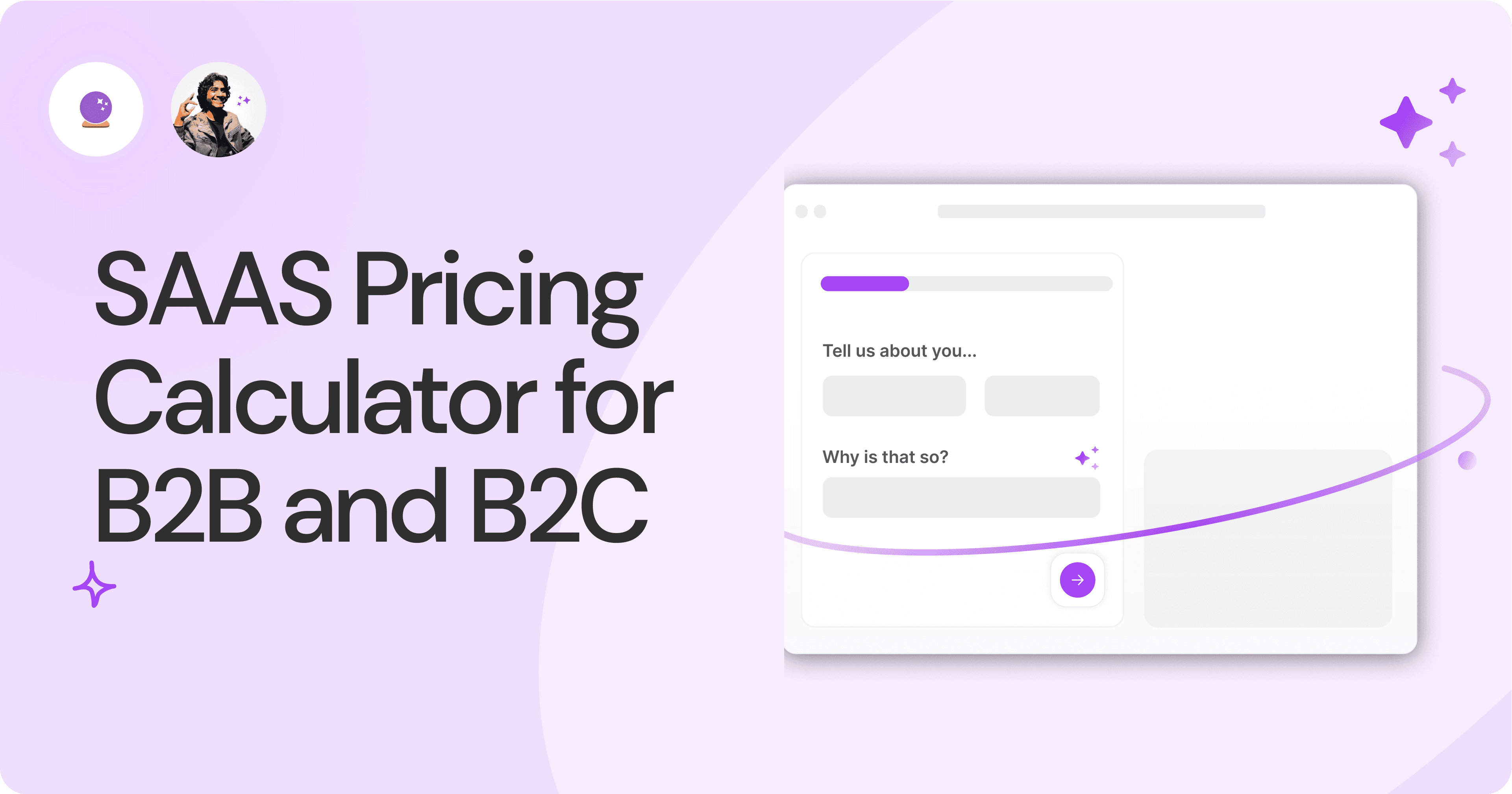
SAAS Pricing Calculators: B2B v B2C Online Forms.
The SaaS pricing calculator is an essential tool for both B2B and B2C SaaS companies. But how do you build it, right? We have you covered.
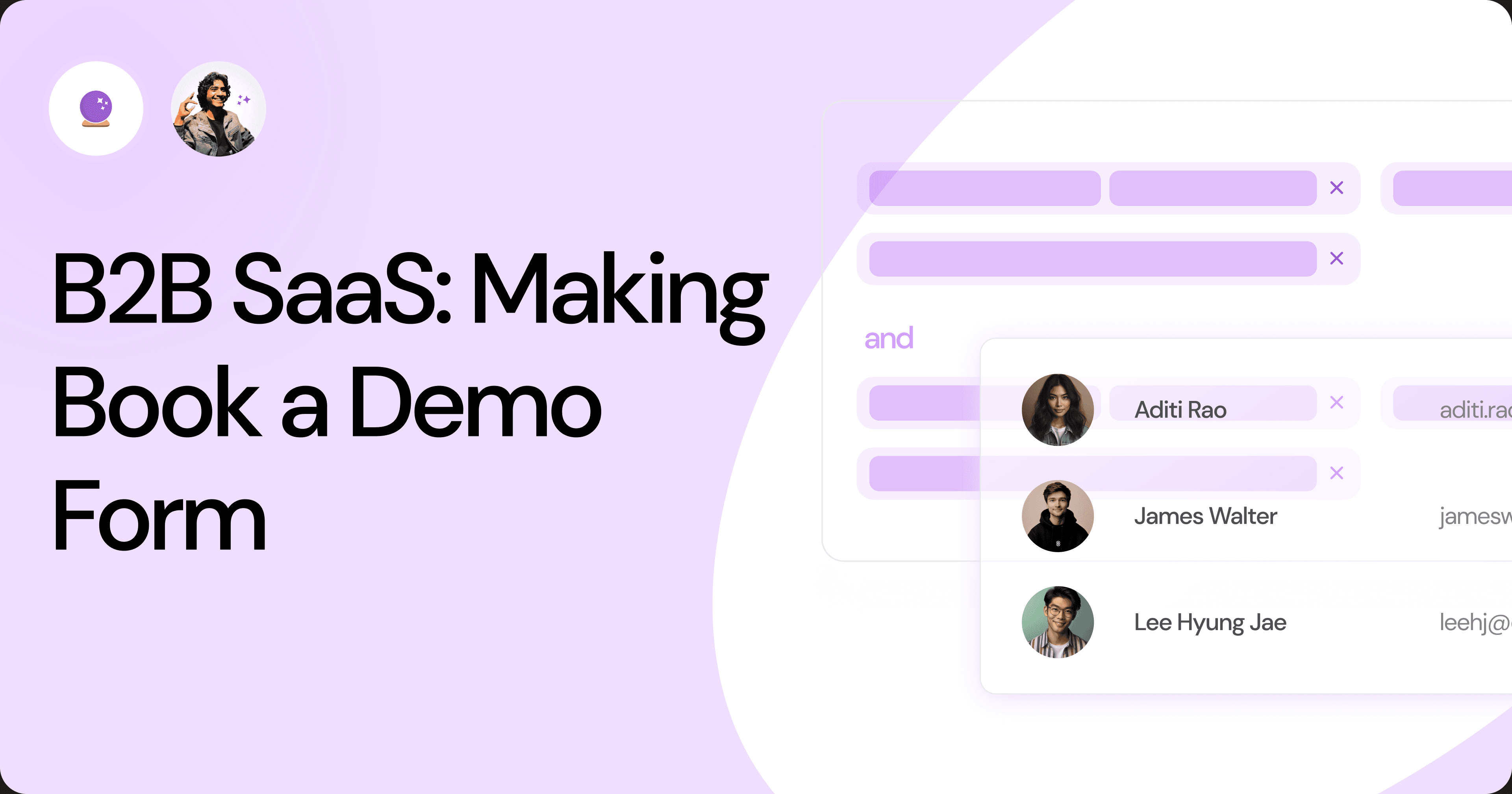
B2B SaaS: Making Book a Demo Form.
Having the perfect book a demo form for B2B SaaS is the first step in capturing leads. There are a few fundamental techniques to get this form right. Read on.

How to Get Started With SaaS Onboarding.
SaaS onboarding is essential for customer onboarding in B2B and B2C SaaS. Let’s understand its fundamentals, including the metrics.
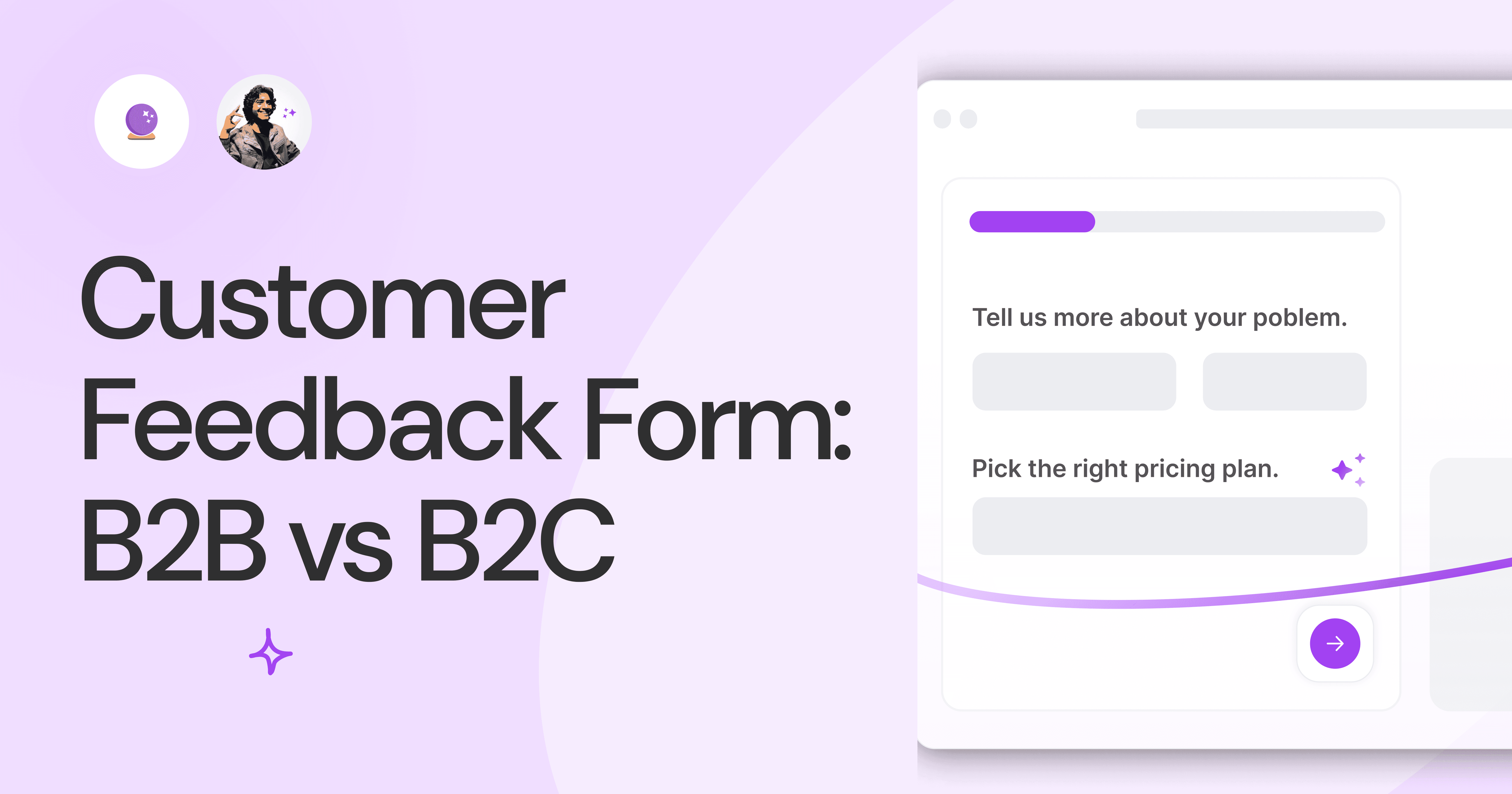
Customer Feedback Form: B2B vs B2C.
Why is customer feedback important? Because it dictates progress on B2B and B2B products and services for the customer to meet their goals.
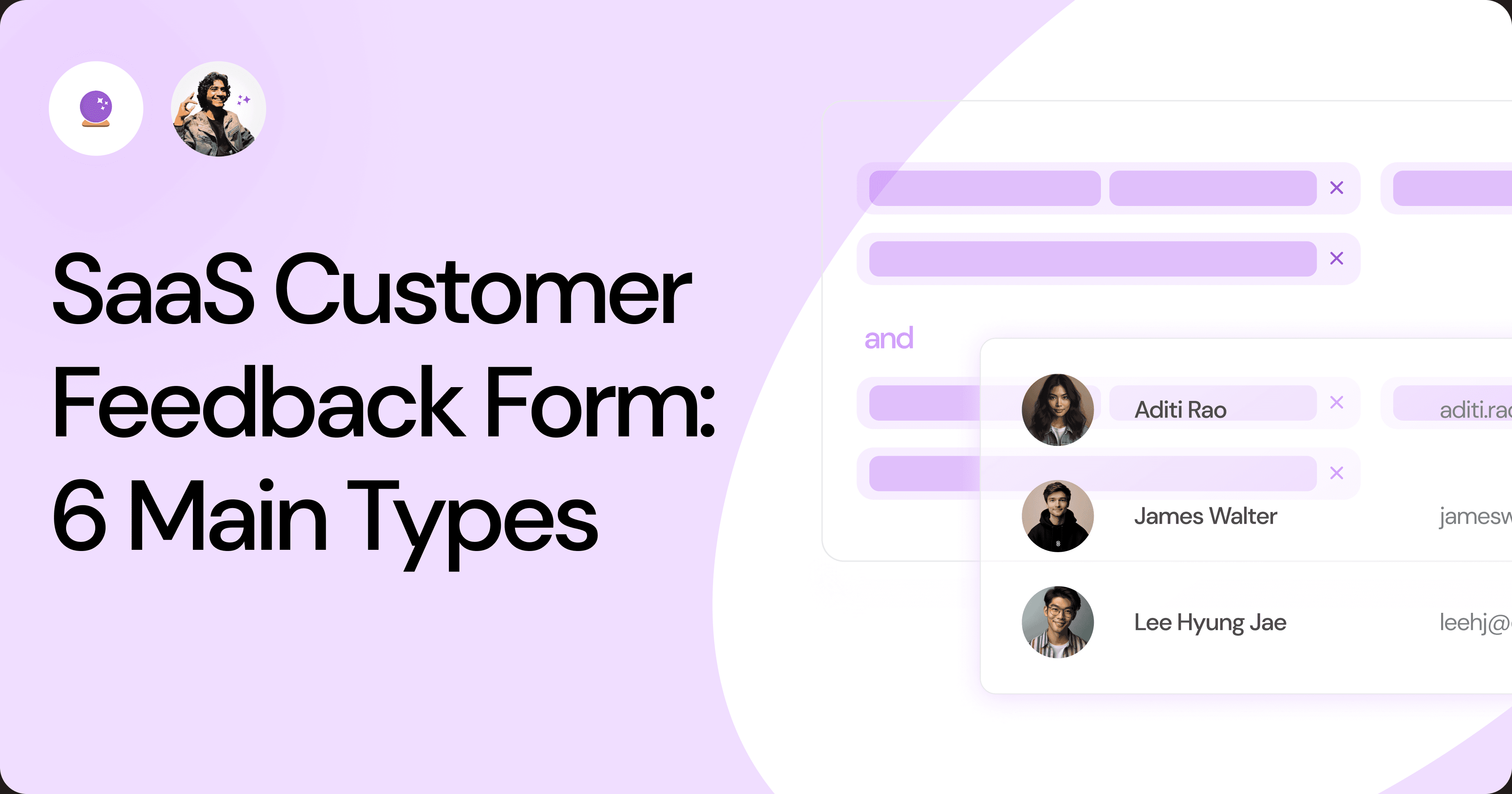
SaaS Customer Feedback Form: 6 Main Types.
As much as SaaS is self-serve, the role of a customer feedback form is highly relevant. There are different types, each with its use case and sections.
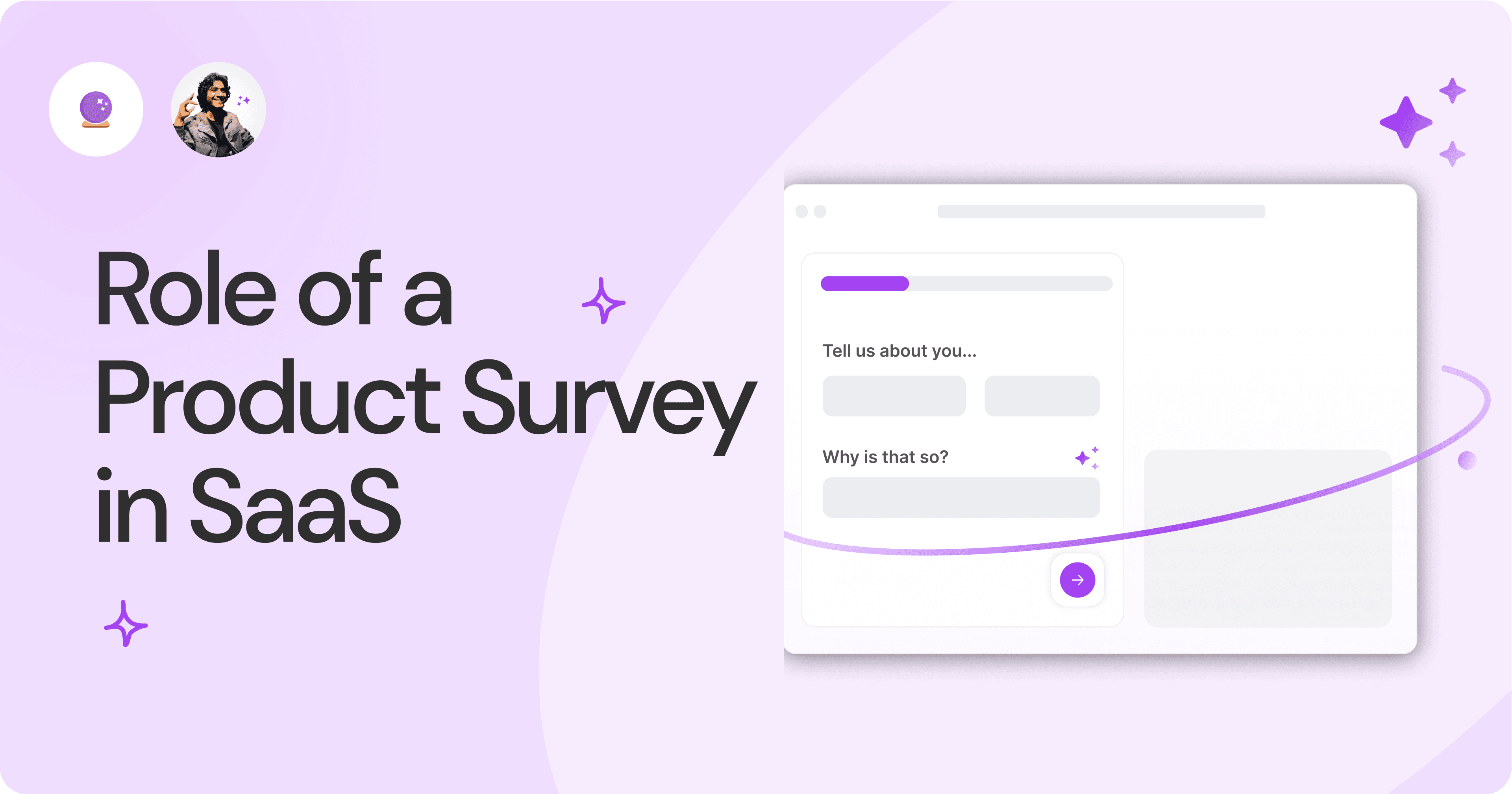
Role of a Product Survey in SaaS.
SaaS is all about creating products for specific use cases. This is where a product survey becomes all the more important to know the user deeply.

Should You Do a SaaS Market Survey?
Every SaaS company wants to grow fast. But without a market survey, growth isn't possible or sustainable. Let’s see how to do a market survey.

SAAS Pricing Calculators: B2B v B2C Online Forms.
The SaaS pricing calculator is an essential tool for both B2B and B2C SaaS companies. But how do you build it, right? We have you covered.

B2B SaaS: Making Book a Demo Form.
Having the perfect book a demo form for B2B SaaS is the first step in capturing leads. There are a few fundamental techniques to get this form right. Read on.

How to Get Started With SaaS Onboarding.
SaaS onboarding is essential for customer onboarding in B2B and B2C SaaS. Let’s understand its fundamentals, including the metrics.

Customer Feedback Form: B2B vs B2C.
Why is customer feedback important? Because it dictates progress on B2B and B2B products and services for the customer to meet their goals.

SaaS Customer Feedback Form: 6 Main Types.
As much as SaaS is self-serve, the role of a customer feedback form is highly relevant. There are different types, each with its use case and sections.

Role of a Product Survey in SaaS.
SaaS is all about creating products for specific use cases. This is where a product survey becomes all the more important to know the user deeply.

Should You Do a SaaS Market Survey?
Every SaaS company wants to grow fast. But without a market survey, growth isn't possible or sustainable. Let’s see how to do a market survey.

SAAS Pricing Calculators: B2B v B2C Online Forms.
The SaaS pricing calculator is an essential tool for both B2B and B2C SaaS companies. But how do you build it, right? We have you covered.

B2B SaaS: Making Book a Demo Form.
Having the perfect book a demo form for B2B SaaS is the first step in capturing leads. There are a few fundamental techniques to get this form right. Read on.

How to Get Started With SaaS Onboarding.
SaaS onboarding is essential for customer onboarding in B2B and B2C SaaS. Let’s understand its fundamentals, including the metrics.

Customer Feedback Form: B2B vs B2C.
Why is customer feedback important? Because it dictates progress on B2B and B2B products and services for the customer to meet their goals.

SaaS Customer Feedback Form: 6 Main Types.
As much as SaaS is self-serve, the role of a customer feedback form is highly relevant. There are different types, each with its use case and sections.

Role of a Product Survey in SaaS.
SaaS is all about creating products for specific use cases. This is where a product survey becomes all the more important to know the user deeply.

Should You Do a SaaS Market Survey?
Every SaaS company wants to grow fast. But without a market survey, growth isn't possible or sustainable. Let’s see how to do a market survey.

Nine Types of Healthcare and Medical Forms.
Medical forms are a must-have for any healthcare business or practitioner. Learn about the different kinds of medical and healthcare forms.

4 Tips for Better Medical History Forms.
Medical history forms are central to patient care, onboarding, and medical administration records. Learn how to make them easier to fill.

How to Build Mental Health Intake Forms?
Mental health intake forms are not like patient intake forms. Mental health intake forms deal with far more sensitive data and have specific design methods.

What, Why and How of Telemedicine Forms.
Telemedicine is on the rise and with different form builders out there, which one best suits your needs as a healthcare services provider?

3 Reasons for Major Drop-Offs in Medical Forms.
No matter which healthcare form we pick, there are major drop-off reasons. We shall dive into the top 3 and learn how to resolve them in your next form.

Patient Onboarding Forms - From Click to Clinic.
Patient onboarding forms are the first touchpoint for patients; getting this right for higher conversion rates is a must-have. Learn how to perfect them now.

5 Key Parts of a Good Patient Satisfaction Form.
The goal of patient satisfaction surveys is to course-correct the services of a healthcare provider. Patient feedback leads to a culture of patient-centric care.

Build Quick and Easy Medical Release Forms.
Every HIPAA-compliant healthcare provider comes across medical release forms that involve details from medical history forms. Can they be shipped fast? Yes.

SAAS Pricing Calculators: B2B v B2C Online Forms.
The SaaS pricing calculator is an essential tool for both B2B and B2C SaaS companies. But how do you build it, right? We have you covered.

B2B SaaS: Making Book a Demo Form.
Having the perfect book a demo form for B2B SaaS is the first step in capturing leads. There are a few fundamental techniques to get this form right. Read on.

How to Get Started With SaaS Onboarding.
SaaS onboarding is essential for customer onboarding in B2B and B2C SaaS. Let’s understand its fundamentals, including the metrics.

Customer Feedback Form: B2B vs B2C.
Why is customer feedback important? Because it dictates progress on B2B and B2B products and services for the customer to meet their goals.

SaaS Customer Feedback Form: 6 Main Types.
As much as SaaS is self-serve, the role of a customer feedback form is highly relevant. There are different types, each with its use case and sections.

Role of a Product Survey in SaaS.
SaaS is all about creating products for specific use cases. This is where a product survey becomes all the more important to know the user deeply.

Should You Do a SaaS Market Survey?
Every SaaS company wants to grow fast. But without a market survey, growth isn't possible or sustainable. Let’s see how to do a market survey.
Subscribe to stay updated.
Subscribe to stay updated.
Subscribe to stay updated.
HC

HC

HC

HC

70+ people from across industries read our emails.
HC

HC

70+ people from across industries read our emails.
HC

HC

HC

70+ people from across industries read our emails.




Bangalore, India / San Francisco, US
WorkHack Inc. 2023
Bangalore, India
San Francisco, US
WorkHack Inc. 2023
WorkHack Inc. 2023
Bangalore, India / San Francisco, US
WorkHack Inc. 2023
Bangalore, India / San Francisco, US



